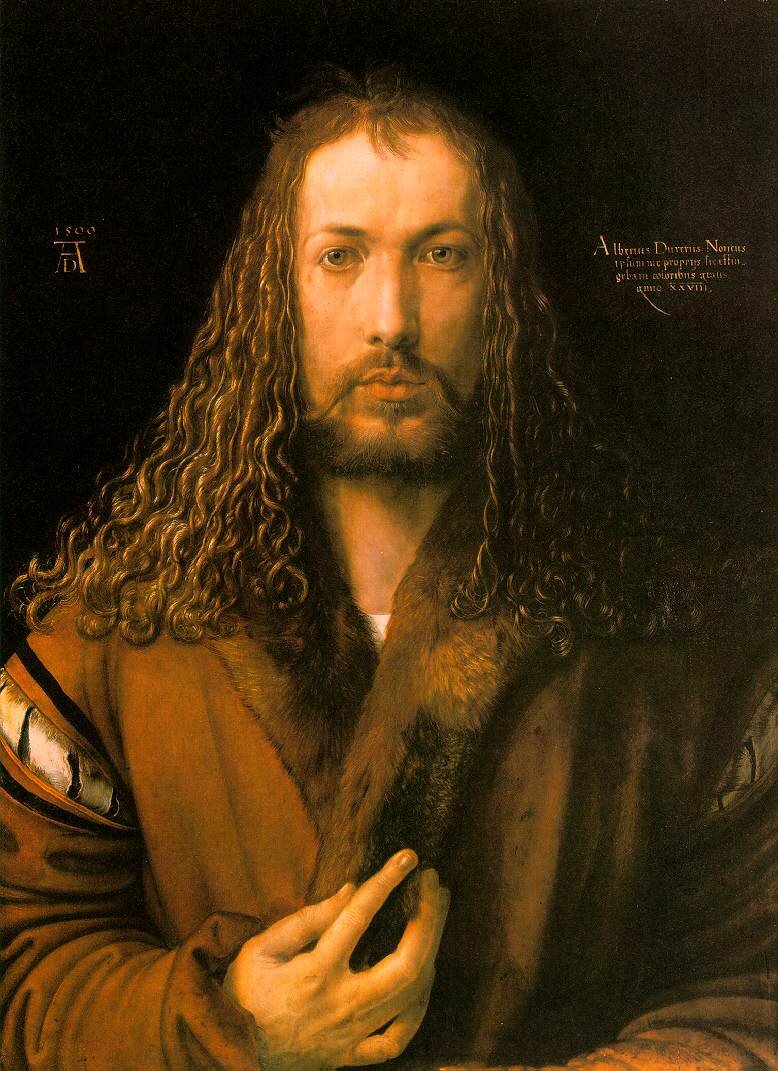Today is the feast day of St. Jerome who was said to have tamed a lion.
Today I write as if while looking at a series of portraits. There is the purportedly crotchety and certainly prolific Saint Jerome (died on this day in 420), depicted by Albrecht Dürer (1471-1528) with a lion and dog.
I think of the lion and dog and their portraits as I look forward to drawing before our Blessing of the Animals service this Sunday, October 4. I will begin to draw charcoal portraits at 2 PM to benefit children in Haiti before the short service begins at 3 PM—click HERE for the flyer.
Dürer himself was the subject of a recent NY Times illustrated article on the self-portrait—see it by clicking HERE. The article proposes that Dürer, in his last painted self-portrait, appears as only Christ had been depicted before. This later painting bears the monogram Dürer developed from the letters A and D—his own initials, and perhaps also a reference to “anno domini,” the year marking Christ’s birth.
During his first visit to Italy, Dürer had written back to a friend still in Germany, "How I shall freeze after this sun! Here I am a gentleman, at home only a parasite." It was when he arrived home that Dürer put his monogram to use, lending stature to the job, “artist,” by making art bear the signature of its maker.
The monogram as self-identifier is itself a sort of self-portrait. It occupies a corner of a work not unlike a skull or “memento mori” that began its appearance in art in earlier times as reminder of mortality to both artist and onlooker.
“The Ambassadors” painted by Hans Holbein the Younger in 1533, has a memento mori at the bottom made visible by viewing the portrait from close to its lower right side and turning to look to the left. Watch Dr. Kat’s video to further explore the painting by clicking HERE.
Dürer’s monogram appears in his etching of St. Jerome opposite a memento mori—a human skull. I have always assumed that Dürer identified with the hard-working writing and translating saint whom he depicted in the medieval study with his pets at his feet.
Jerome wrote, “The face is the mirror of the mind, and eyes without speaking confess the secrets of the heart.” Perhaps Dürer thought of this as he reflected himself in Jerome. It recalls scriptural references that hearken back to the original portrait in Genesis—the man and woman whom God created as a self-likeness.
Is it this God-likeness that Dürer felt gave him authority to paint himself as Christ’s likeness in his third and last painted self-portrait? Might the entire painting be a memento mori—an integration of image and inscription which reads in Durer’s first painted self-portrait, “Things happen to me as is written on high?”



